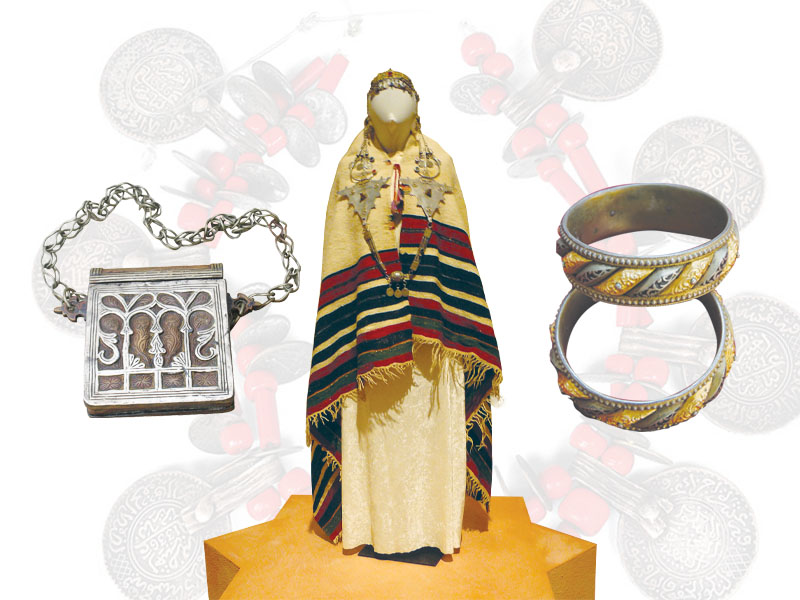Morocco’s silver jewellery: An ancient rural art
Issue 37

By Rahmah Miri
In Morocco, the silver jewellery industry, (Al Naqra), plays a significant role in the nation’s folk heritage. It was primarily villagers who made and wore the jewellery, and traditional craftsmen travelled from region to region with their skills, tools and creations.
Their handicrafts reflected the many civilisations that have influenced Morocco, including the Phoenicians, the Byzantines, the Romans, the Africans and the Andalusians. In the national museums, there are remnants from all these civilisations. Many historical documents show that there were silver mines and trade between the people and the sultans.
Moroccan jewellery is classified into urban jewellery with gold and precious stones, and large, thick rural jewellery made from silver or plated metals.
Although silver jewellery now comes in many varieties and forms, it is traditional because it is still made using the same simple techniques and tools that have been used for thousands of years.
A discussion of the history of jewellery leads us to the history of silver mines, which date back to the pre-Islamic period. These mines were very important after the introduction of Islam, because the silver was used to manufacture coins, which contributed to the development of the economy. Silver was used for decoration, beautification and monetary transactions.
In ‘The Book of Morocco in the discussion of the African and Moroccan countries’, Al Bakri talked about silver mines in Taznakht and Tamidlt on the outskirts of the city of Taroudant, and in Tamdult in the south of the Little Atlas. Leo Africanus talked about a silver mine in the Hilala area in the Little Atlas.
There is no doubt that the abundance of silver led to the development of the jewellery industry. However, the areas known for silver jewellery are not necessarily located near silver mines.







































































